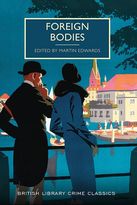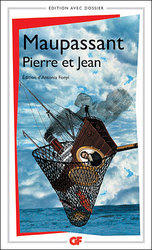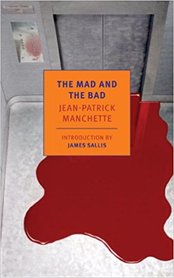
Full credit should be given to Edwards, who worked with translators and publishers such as Josh Pachter and John Pugmire to locate and select these stories and present them to English language readers, some translated especially for this anthology. There are fifteen stories in all, with the most successful for me being the ones that incorporate observations and themes from the author’s home country and cultural philosophy.
Take the collection’s first and oldest entry, “The Swedish Match” (1884), a slyly sardonic story by Anton Chekhov. The plotline is comfortably familiar, with the irritable examining magistrate Tchubikov and his hypothesizing assistant Dyukovsky looking into the disappearance of a retired guardsman. There is a mystery, an investigation, multiple exchanges between two detectives who have differing perspectives (one is old, cantankerous, and prone to surface generalities; the other is young, nimble, and inclined to wild surmises), and finally a resolution. But the comic characterization, the ironic solution, and the very human view of these ordinary people bumbling about and making mistakes is in perfect harmony with Chekhov’s more celebrated playwriting and the worldview he fosters. The story also feels ahead of its time, as it both celebrates and punctures the traditional mystery tropes which, at the turn of the century, were still being shaped and solidified.
In contrast, consider the later story “The Venom of the Tarantula,” written by Sharadindu Bandyopadhyay and set in his native Nepal. The plot: a hedonistic old man under medical surveillance manages to regularly smuggle spider venom into his room to use as a dangerous narcotic. Assistant Ajit describes this mystery to his friend, the brilliant detective Byomkesh Bakshi, hoping that the puzzle will take Bakshi’s mind off of a consuming forgery case. Despite the exotic contraband at its center, “Venom” feels the most English of all the collected stories, which is beat-for-beat a detective story in the tradition of Conan Doyle’s Sherlock Holmes adventures. (The solution also recalls one of G.K. Chesterton’s most famous Father Brown tales.) If setting and Indian ensemble were replaced with Anglo-Saxon counterparts, the tone and characterization would lose nothing in translation because there is nothing unique to lose.
Personally, the best examples of genre fiction being enhanced by the social and geographical perspectives of their authors are found in the two stories from Japan. Martin Edwards introduces Koga Saburo’s atmospheric and entertaining tale “The Spider” (1930) as “a pleasing fusion of elements from macabre fiction and the classic detective puzzle.” Death occurs in an odd, silo-shaped laboratory where Professor Tsujikawa houses hundreds of specimens of exotic arachnids, some of them very lethal. The murder method—which isn’t a spider bite, enjoyably—is memorable and connects (for me) with the Japanese virtues of order and balance, especially when the murderer’s motive is revenge or righting a perceived wrong. The first-person narrative from a Poe-esque observer of the horrors adds a layer of personal-yet-objective reporting to an otherwise Gothic story.
Arguably the most successful tale in the collection is provided by Keikichi Osaka. “The Cold Night’s Clearing” (1936) is a haunting piece where we discover the circumstances that turned a secluded, snow-surrounded home into the scene of a violent murder-kidnapping. The author creates a foreboding sense of tragedy, and a senseless act of murder starts to reveal a logic that is both rooted in the Japanese notion of honor and a sadly inevitable cause-and-effect fatalism for the people involved. Tone, action, and setting all synthesize to deliver an intelligently mournful work of short fiction that transcends any potential genre limitations.
Inevitably, a few of the stories here fall short in premise or execution. “Murder à la Carte” by Jean-Toussaint Samat finds a narrator musing (vaguely) on lethal combinations of non-poisonous foods, although such murderous menus would be more likely to deliver indigestion instead of death, and “The Lipstick and the Teacup” by Dutch writer Havank turns on a clue so simplistic that it could have been rejected by boy detective Encyclopedia Brown.
Luckily, there are short, caustic entries to reward the omnivorous reader: Maurice Level's 1920 conte cruel “The Kennel” finds hounds baying outside while a cuckolded husband decides what to do with his wife's lover, whom he discovers in their bedroom. Flemish author John Flanders contributes “Kippers”, a story with a Roald Dahl-type sting where a sudden shipwreck turns the tables on a bullying member of a crew. Also highly enjoyable are Pierre Véry's “The Mystery of the Green Room”, which pays clever homage to Gaston Leroux's landmark novel The Mystery of the Yellow Room, and Maurice LeBlanc's 1923 story “Footprints in the Snow”, a colorful detective tale featuring an apparent murder occurring around a deep well.
Martin Edwards and his partners in international crime are to be commended for gathering and sharing these intriguing, relatively unknown stories from around the world. Even while a few authors lean a bit too heavily on the familiar British mystery fiction that clearly inspired them and mute the originality of their own settings and cultures, there is much here to enjoy, explore, and celebrate. An eBook reading edition of Foreign Bodies was provided by Poisoned Pen Press through NetGalley in exchange for an honest review.


 RSS Feed
RSS Feed